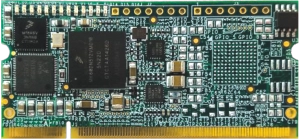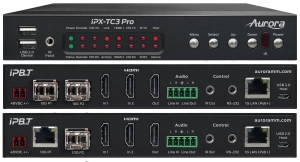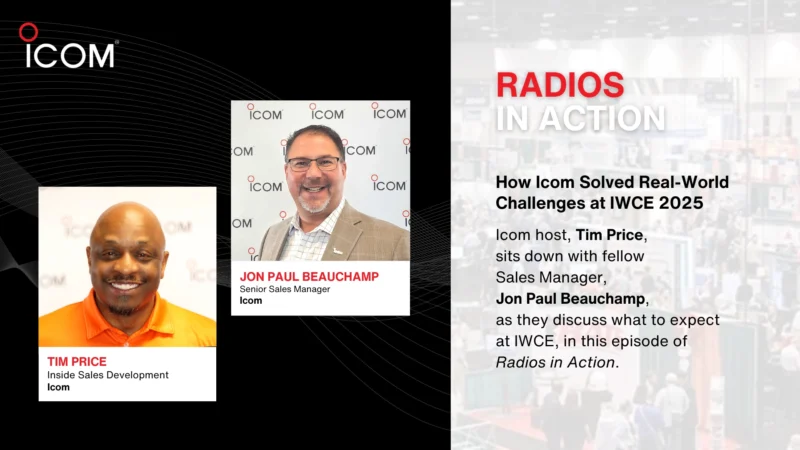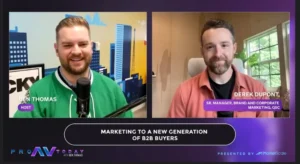Setting the Standard for Establishing Standards with Paul Harris of Aurora Multimedia Corp
There is a Latin phrase, “Fortuna Eruditis Favet,” which loosely translated means “Fortune favors the prepared mind.” Perfecting that preparation process, especially in business, can make or break company. Paul Harris has spent his entire life in that process. On today’s podcast, our host spoke with Paul Harris, the CEO/CTO for Aurora Multimedia Corporation. They discussed the nature of “standards” in the Pro AV industry, his approach to new challenges and technologies, and how he feels about being part of a large amount of “firsts.”
Sean Heath: Now I want to brag on you for just a minute because I happen to know that you worked early on with Pioneer on a tuner and you were in on the ground floor when HDMI cards started to come into existence. Does that just feel natural to you? Did it make total sense to you to be, “Well, of course, I’m working on this thing”? Or do you look bad and think, “Wow! That was kind of a surprise”?
Paul Harris: You know, like everything else, opportunity of many times with any type of company sometimes just comes into play by accident and that’s one of those things where it was just opportunity between me and another person. His name was Josh from Pioneer. We were at a Trade Show InfoComm, the guy is coming by in his loud shirt because he likes to wear those Hawaiian shirts and sees what we’re doing and says, “Hey, can you put that in a card?” And I said, “Sure, why not?” And next thing you know that relationship and friendship began and we started making a lot of third-party cards together for the Pioneer Plasma which at the time was pretty revolutionary because no one had ever done a third-party card slot for a major company like that.
So it was actually kind of a privilege and it was very fun actually. We developed the first card, I think, it was in like four months. So it went pretty quick. But the tuner card or we call in New York TUNA, instead of tuner because we like slime and slur some of our speech, was one of the first products that we made. And it may sound simple, but at the time when people come out with the flat-screen display, they put nothing in it, no bells and whistles. So if you wanted it, you needed some way to make it fit in there. So it was quite the opportunity because back then they were selling these displays for $30,000 each. So a $1,000 tuner was a pretty good day for us especially when you’re selling thousands of those things.

So it’s a pretty nice opportunity. As far as HDMI goes, when HDMI came out about 2003, 2004, we were one of the first adapters for it. We didn’t do it because we thought it was some great innovation that was going to lead the way. I wish I could say I had this great foresight. They just wanted it for their display. We got to develop a card with it and got our first taste of HDMI for better or for worse. Back then, it had a lot of hiccups in it and we found those the hard way, but we also saw that this was going to take root into industry.
SH: One of your strong suits of which there are many, but one of the things you really have a tendency to excel at is integration of multiple standards whether they’d be IP or even USB connections, it seems to be that the concept of communication protocols is really something that you’re very comfortable just walking around in that space. Talk to me about that mindset.
PH: Well, everybody is always trying to advance the protocols. I mean right now I’m working on some projects, as a matter of fact with USB. I mean something as simple as USB has turned complex. If you actually look at USB, people don’t appreciate some of the complexities behind things. So like let’s take USB 3.0 or 3.1 with a Type C Connector. That’s not just some simple connection, that thing delivers like almost a hundred watts of power, it delivers DisplayPort, it delivers backward compatibility to USB 2.0, it delivers PCI-Express. So I mean this one little tiny connector, which is also reversible, went to the next level but yet added a whole layer of complexity that has to be deal with. The key is to really just keep on top of these things. I mean the person who stays on top of it and looks to utilize this technology usually tends to win.

SH: You know, the concept of how something is communicated can sometimes be as important as what is being communicated and something that’s really dependent on a healthy transfer protocol and on a robust data stream is AV over IP which is something I know you’ve had your eye on lately.
PH: Oh, not lately, for years now. That’s where the whole market is heading and inevitably everything will be over IP. It makes sense, there are challenges to overcome and as we’ve proven there are better ways of doing it so we’ve introduced… I’m proud to say we’ve introduced a lot of industry firsthand. Some people are aware of and many people are not, but we developed one of the first 10-gig solutions in junction with the AptoVision who is now Semtech. But once again, we didn’t just set out with their reference design. So we made the first wall play version of it, we made the first transceiver of it. Actually, we’re still the only people who do that. We were the first people to ever take Dante and AES67 and merge it into combinations with video standards. That’s actually catching on because we’re seeing some of our competitors do that now, but we actually did that over three years ago. So that was pretty cool to be one of the first people to start that trend that you’re seeing now.

PoE over 10 gig, no one ever did it before and yet we’re still the only ones doing it and Netgear and Huawei now really switches that to 10 gig PoE and they had to use our product to even test it because there was no one out there that they can test it with. So sometimes you got to be on the bleeding edge in order to make things happen. So why is something as simple as 10-gig PoE important? Because it simplifies the install. It’s one less power supply and you’re doing it with 1 gig anyway, so why not with 10 gig?
PH: So somebody has got to do it. It’s a chicken and an egg thing. It’s got to start somewhere somebody’s to take hold and to actually make it happen. So we made that happen. So that was another example of something new and innovative that we’ve done. 8-Channel Surround Dante is another innovation that we’ve recently introduced as well. It goes on and on, but we’re always trying to introduce things that no one has ever done before just to lead the way. As I said, there’s always a better way of doing things and you don’t have to become complicit or complacent for that matter.
SH: Well, as these technologies continue to evolve and become more powerful but at the same time become simpler to deploy, it seems like the natural progression is to be as modular as possible which then allows easier upgrades in the future when something stronger, better, faster comes along, you can just unplug what you’re using now and plug in the new one. And those standardized communication protocols are going to be even more important as we move ahead, aren’t they?
PH: Standardization is always a good thing. It’s all what you do with it. As I tell everybody, there’s no such thing really as a standard. What really there is, is a popularity contest. Popularity wins, not standards organizations. HDMI is a great proof of that right off the bat. I mean they’re standard by popularity but originally VESA was the one, who is a standards organization, was the one who introduced DisplayPort. HDMI did a much better job of selling it into the market than DisplayPort did. That’s why they dominate the majority of the market right now. DisplayPort is a great standard, just didn’t market it well.
Look at Apple. Apple is not a standard but yet it dominated the market for the longest time until Android came around and Android, by no means, is a standard either, but they become standards because of popularity. So ultimately, popularity creates standardizations at the end of the day. But having a good definition regardless of whether you’re officially the standard by an organization or not is important and that’s what counts at the end of the day is that material available and what can we do with that material.
I’m a firm believer that it’s not necessarily up to the manufacturers to tell people what you want them to do. People want choice. I mean that’s really what it comes down to at the end of the day. I know Steve Jobs was praised at one time for how he innovated the smartphone market and how his philosophy was showing people what they need and not letting them determine that. And the problem if you really look at it is if that was the case, then why does Android now dominate the market?
PH: At the time, it made sense because the competition really wasn’t there. But if you actually look at it, Google came along, they made Android, first iteration and second iteration weren’t exactly the best. But after a little bit of time, it kept getting better and better and the reason why the iPhone lost the majority of the market to the Android market was simply choice. People got to choose what they wanted. They can have a big phone, a small phone, an ugly phone, a cool looking phone with curves on it. They can have one with a huge camera on it, one without a camera. They have so much choice from so many different manufacturers.
So the proof is in the pudding. People had shown that, yeah, on one hand, they need to see what the innovation is, to see where they can take it, but they like variety, they like identity, they like to be different, they like to have choice, and that’s I think what was missed along the way when people are getting credit for certain things that they did. They were getting more of the credit because it was the person that really did what it did, but no one really knew just how much people wanted more than just that. They wanted really to go beyond that and that’s kind of the philosophy that we follow is a little bit more of that.
For the latest news, videos, and podcasts in the Pro AV Industry, be sure to subscribe to our industry publication.
Follow us on social media for the latest updates in B2B!
Twitter – @ProAVMKSL
Facebook – facebook.com/marketscale
LinkedIn – linkedin.com/company/marketscale









